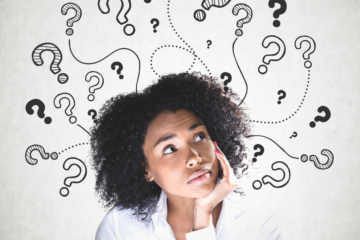The Art of Balance and “The Iron Popsicle.”
Throughout the years, a lot has been said about balance and the value of balance in our lives. Being balanced or having balance is very important in order to perform at your very best. Balance is very much sought after, like work-life balance for example. Yet, in conversations about balance, we often forget about something else that is important. That something else is called “being centered”.
Balance in your body refers to your ability to stand upright, still and erect, not tilting left or right, or leaning forward or backward. Makes sense, right? Then how can one be centered and what does it even mean being centered? Well, being centered refers to the center of gravity in your body. To some (if not many) it may come as a surprise, but the center of gravity in your body shifts all the time. It’s not fixed by any means. It’s very dynamic as a matter of fact.
For example, it can go from the lower abdomen all the way to the top of your head in a matter of seconds guided by your thoughts alone. If you don’t believe me, do a little digging on this subject. The easiest example of being centered can be found in many of the martial arts teachings. That feeling of being grounded, glued to the floor by masters of various martial arts comes from their lower center of gravity. They are not in the heads, they are calm and composed, almost relaxed, yet highly focused and aware of their bodies and their surroundings. If you try to push a Tai Chi or an Aikido master while he is in his active stance, you’ll likely fail to move him. But if you try to even slightly push an amateur or a newbie while he is in his stance, you’ll likely tip them over or throw them off balance altogether.
How do I know? Here is a funny story that will explain this better than anything I can think of.
About two years ago, I started my quest to learn Tai Chi. Notice how I said “to learn”, not master. I mean it because I know that the path to mastery will take many many years. So, in my first or second lesson, my master (Shifu) asked me to relax my upper body as much as I could and take a regular Tai Chi stance: knees slightly bent, quads, glutes, and hamstrings activated, everything above the waistline (including abs) relaxed (especially the neck and shoulders). I followed the instructions (at least I thought I did) and took the stance. The master approached me with a grin on his face. He was about to have some fun with a newbie (Me). He even gathered other students around me to demonstrate what he called “the iron popsicle”.
As I was standing there, pretty much motionless, trying to relax (I’ll be honest that I didn’t do a very good job at that) and thinking to myself “what the heck is about to happen?”, the master finally came closer to me and asked if I was ready. “Ready for what???” As it turns out, ready for him to apply some pressure to me (a gentle push) while I was standing to see if I would lose my balance. As I learned later, in Tai Chi, when you’re balanced and centered in your stance, your opponent can’t just easily move you, sometimes even with a lot of effort. So, I told him that I was ready for the test. He faced me directly as I was maintaining my stance. Many other students were watching with anticipation and smirks on their faces (they all knew what was about to happen). As my master’s hand approached my left shoulder, I tensed up even more (who wouldn’t?). He pushed my shoulder slightly with only three of his fingers and backward I went. I had to take a few steps to regain my balance and not fall back. “See”, the master looked around at everyone, “the iron popsicle!” Everybody burst out laughing…
Everyone but me. What do you mean an iron popsicle?! My ego was certainly hurt, and I was determined to prove that I wasn’t the iron popsicle. So, we went for a couple more rounds of being pushed around (it wasn’t hard) by the Shifu as I was trying to maintain my balance. A couple of times, I even leaned forward in anticipation of his push (my cheat mode got activated by the ego) and I still failed. I toppled every time, unable to maintain balance and having to take a step back, right, or left. Every time, the master would look at the crowd of highly entertained students and say (what at the time felt like a life sentence), “see, the iron popsicle.”
What I didn’t understand at the time, was the concept of being centered. I was so in my head about trying to rationalize what my body should do, how to relax and not get tense, how to counter the force and maintain balance, and a few dozens of other thoughts that went through my mind at that time. While I was locked in my head, my neck and shoulders were tense, my chest was puffed, my arms were engaged, my diaphragm and abs were on as if I was ready to take off in a sprint. Therefore, all of my upper body was engaged, and my center of gravity was in my head. Hence, the iron popsicle.
My master later explained after my numerous attempts to maintain balance after a slight push, that he took every “overconfident newbie” like myself through this exercise to demonstrate to us (them) that we are all in our heads, we are so top-heavy. “Imagine an iron popsicle,” he said. “There is a stick and at the top, there is this heavy iron sphere. If you manage to balance it and stand it on its bottom (the empty end of the stick), it only takes the slightest of touches to tip the popsicle over and make it tumble.” Same was happening to me, I was so tense and head-heavy (caught up in too many thoughts), that it didn’t take much from him to throw me off balance. And no matter how much I tried to force it and try to relax, my body simply didn’t know how to do it. It was not used to being relaxed; all it knew was the “go-go-go mode”, dealing with a lot of stress at work, a lack of exercise, and an unhealthy diet.
As weeks went by and I kept on learning the “art” of Tai Chi, I began to learn how to relax my upper body and my core better, as well as to get out of my head and be present to my body sensations and my surroundings. Soon, came the first time in my life when I could actually fully relax from the crown of my head down to the waist. It was as if I could feel my center of gravity descent from the top of my head down to my core as I was exhaling. That was my first encounter with the center. Once I got it, once I discovered what being centered felt like, I was no longer the iron popsicle (hooray). I learned how to lower my center of gravity and keep it there. And with that, I started to understand how my Tai Chi master (at the age of 60+) couldn’t be moved or thrown off balance with a proper push and shove by even several people.
See, as it turns out, you can be balanced even when you’re not centered. But even a slightest outside force or stimulus can throw you off balance when you’re not centered. And then you have to figure out how to rebalance yourself all over again, which can take a lot of time and energy. But when you’re both centered and balanced, that same force or stimulus gets absorbed and channeled by your body without any or very little effect on your balance.
If you take this concept beyond your body, you can start to appreciate how important being centered is to your daily life. Imagine if stress, fear, anxiety, rejection, failure (to name a few) could not throw you off balance easily!? Imagine how much more productive and focused you’d be. Imagine how many things that you regret saying would never be said because you’re centered and balanced and don’t need to always respond with a knee-jerk comment or insult. Imagine how much more control over your life you would gain by practicing being centered? The number of applications of “being centered” are endless, you just need to get creative and keep exploring them for yourself. Being centered really means knowing yourself at the core: knowing your core values, knowing your core competencies, knowing your “why”, knowing your goals, knowing what you stand for and believe in life.
Here is a simple exercise for learning how to be centered.
Stand up. Bend your knees slightly, relax your upper body starting with your face, neck, and shoulders. Take a couple of deep and slow breaths. Feel your chest expanding and contracting. Relax your core (belly). Let your arms hang on the sides of your body. Now place your pointing finger about 2 inches below your navel and lightly press against your abdomen. Press again but a little harder this time. Now think about the feeling you’re experiencing (are you tense?). Take a couple of deep breaths and further relax your diaphragm and abdomen. With each deep breath feel the center of gravity descending as you continue to exhale. Feel more weight in your lower abdomen and hips. Can you feel your center of gravity is right there, where you’re pressing with your finger? You can move your hands around you from side to side to feel that you’re rotating around your core (hips moving too). Your feet should be planted solidly, and you should maintain your balance easily. If you can’t maintain your balance moving around your core (like a hula-hoop move), you’re not centered. You’re just like me in those early days, an iron popsicle. Keep practicing until you get it. Your future self will thank you.
The reason I shared this story and wrote this article is to help you discover a whole another level of understanding of your own body and mind and the powerful connection between the two. To uncover the power that is within you to cause monumental shifts in your performance and in your life in general. Without being centered your balance is always in danger. And to lose it and then to start over is often an uphill battle. So, protect and preserve your balance by centering yourself. Know who you are at the core. Define your core values, determine your “why”, set specific goals and always know what you stand for. That’s what being centered feels like.
It’s like riding a bicycle: once you successfully did it for the first time – you discovered balance. It’s not something that can be taught. So is being centered, I can tell you all about it (like my master told me before my iron popsicle test), but until you experience it for yourself – it’s just an idea and you can’t do anything with it. Once you experience it and then practice improving it, you’ll find it overflowing into many aspects of your life. In my opinion, being centered is the gateway, the bridge to full authenticity.
For me, one of the benefits of being better centered translated into my golf swing. After several months of Tai Chi practice, I broke the 80’s for the first time, shooting a 79 on a challenging golf course. It’s hard to describe the joy I had that day, knowing how hard it was to do that for an amateur who’s been playing recreationally for only 5 years. Another benefit was improving my digestive health as I stopped tensing up as much as I used to (which was ALL THE TIME). My blood pressure stabilized from a regular high 130 by 90, to 110 by 70. My diaphragm became more relaxed and consequently my lungs more expanded, which delivered more oxygen to my body and brain, making my days more productive and effective. My stress levels decreased significantly, leaving me with more focus, clarity, creativity, and productivity. My gratitude and appreciation for small things in life and people grew, and my desire to share my experience and knowledge with the world motivated me to write these very words without worrying about people judging or criticizing me (which was also ALL THE TIME).
I wish you too to discover what’s being centered is like. Once you do, please share your experience as I would love to know. Also, please share it with others in your life. They also deserve to know. If I can be of any help, don’t hesitate to reach me.
Truly yours,
The Gambit
Ⓒ 2020 Gambit Solutions Inc.


